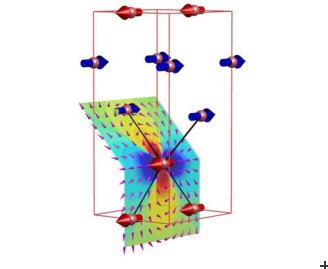Copyright 2012 neutronsources.org | All rights reserved. | Powered by FRM II | Imprint / Privacy Policy
Researchers find spins acting like real bar magnets in a new material
An international team of researchers from Switzerland, Great Britain and Germany has discovered an excellent new material for studying the behaviour of spins. The researchers have shown that the spins in the colourless salt of chemical formula LiErF4 behave like real bar magnets. They also managed to switch on and off the magnetic properties of the material using quantum mechanics. HZB scientists supported the research team from the Laboratory for Quantum Magnetism (Switzerland) and the London Centre for Nanotechnology on their measurements. The results are published in the journal Science (DOI:10.1126/science.1221878).
The researchers had the ideal conditions for their experiments at HZB. They had to cool the material down to 0.04 degrees Celsius above absolute zero in order to study the spins. At the Laboratory for Magnetic Measurements (LaMMB) at HZB, they performed highly precise heat capacity measurements that were crucial for characterizing the phase transition in the material. Then they studied the samples by neutron scattering at the Berlin neutron source BER II. At the single crystal diffractometer E4, the team imaged all of the spins in the material and were able to show that the arrangement of the spins was antiferromagnetic. Having access to both LaMMB and neutron scattering facilities proved especially fruitful for the researchers’ studies at HZB. The research team could namely employ complementary methods that delivered different and mutually reinforcing information about the material. Their measurements were complemented with other experiments at the Swiss neutron source SINQ at the Paul Scherrer Institute.
With the discovery of this salt, researchers now have a material that provides a perfect test bed for researching other quantum mechanical mechanisms. The information service “ScienceDaily” reported the results and provides further details about the user experiment at BER II on its website .
Original Publication
Dipolar Antiferromagnetism and Quantum Criticality in LiErF4, Kraemer C., Nikseresht N, Piatek J.O., Tsyrulin N., Piazza B., Kiefer K., Klemke B., Rosenbaum T.F., Aeppli G., Gannarelli C., Prokes K., Podlesnyak A., Strässle T., Keller T., Zaharko O., Krämer K.W., Rønnow H.M., 2012, Science, 336 (6087), 1416-1419.
